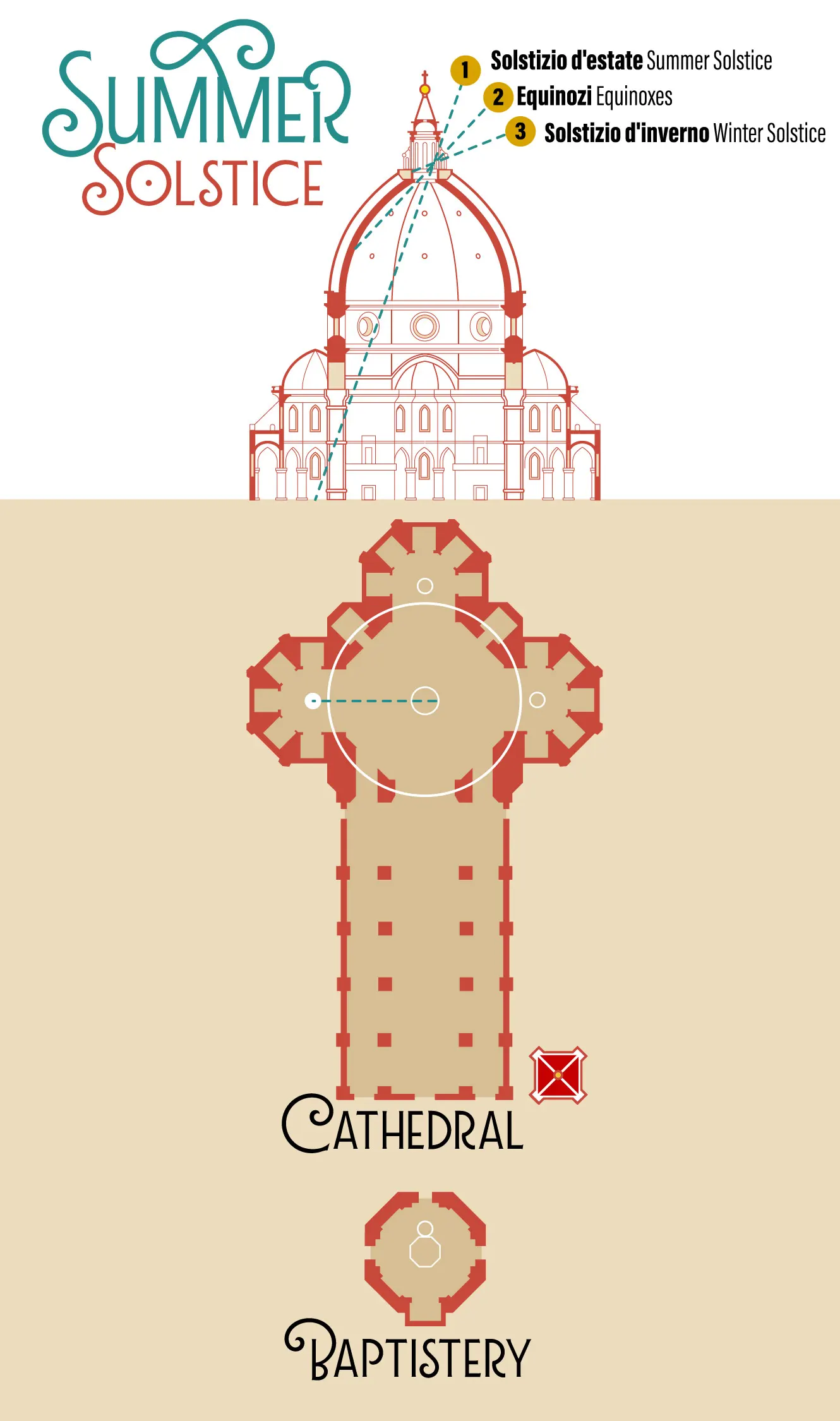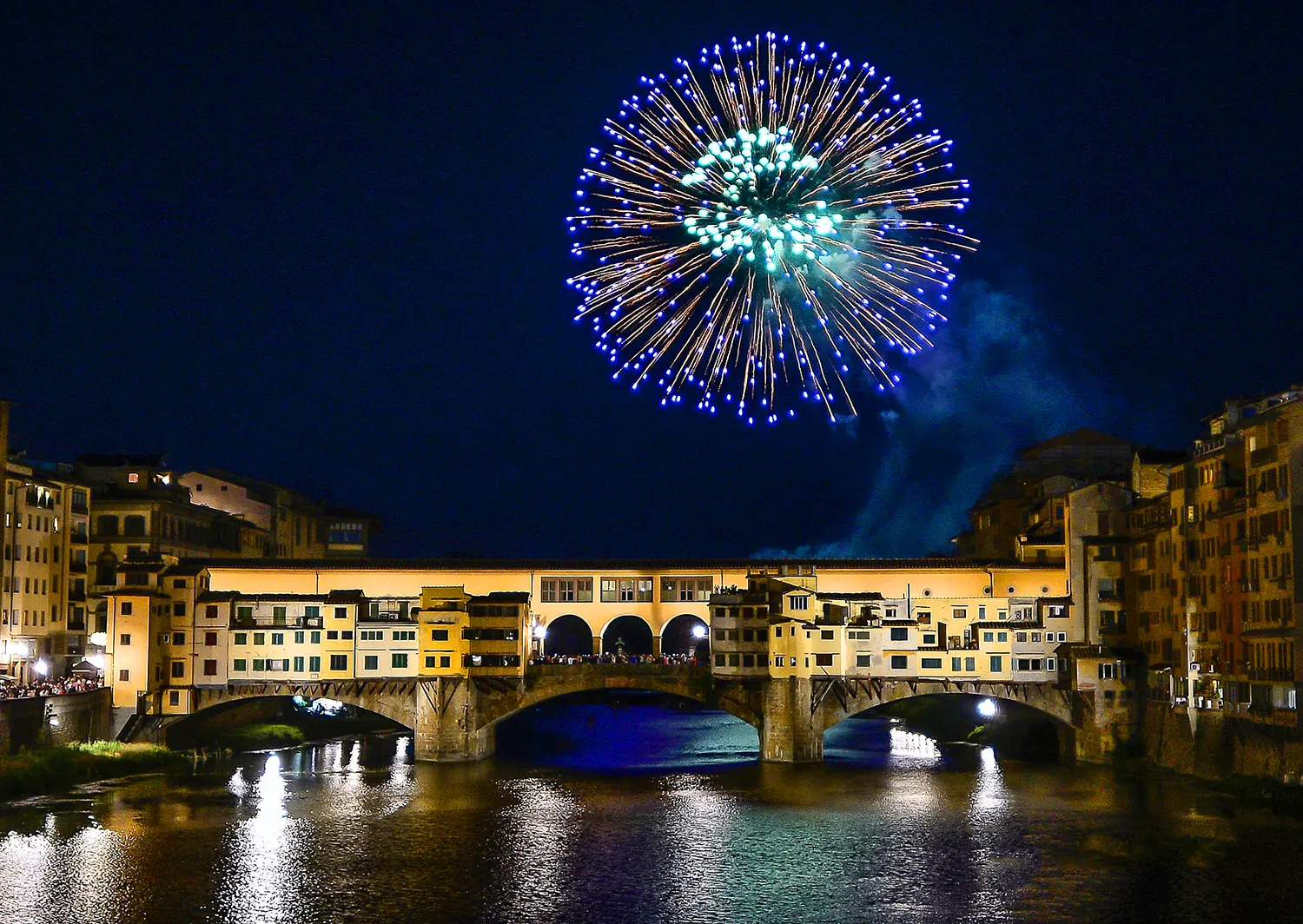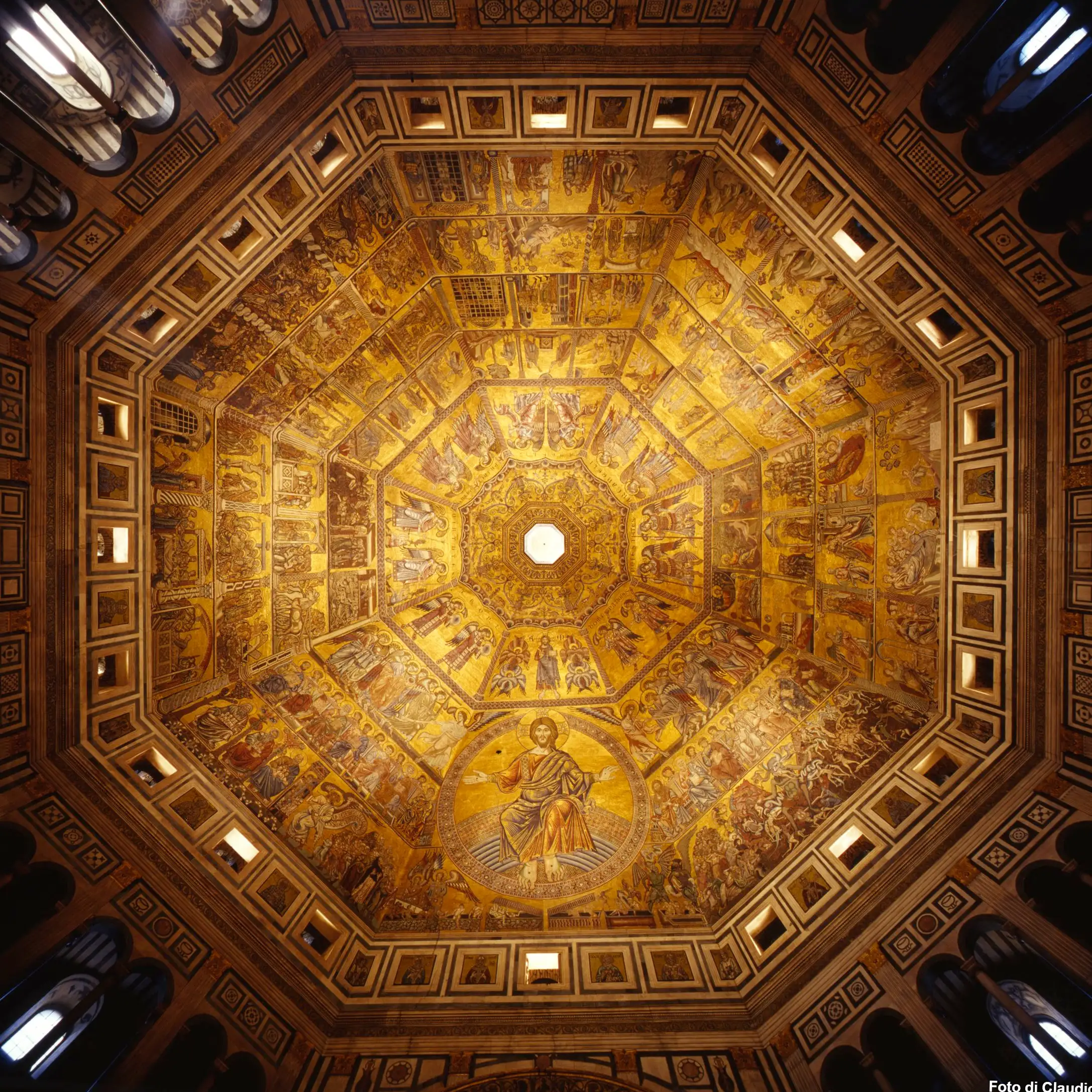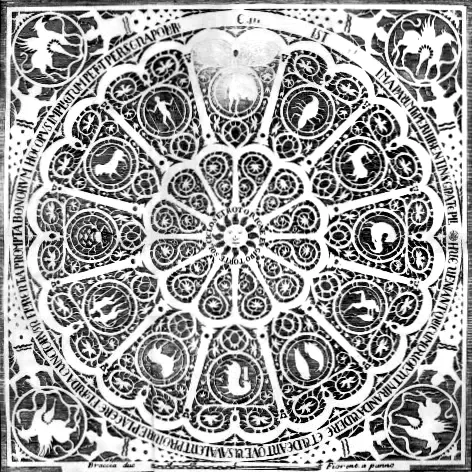The precession of the equinoxes is a slow, continuous shift in the orientation of Earth’s rotational axis, which causes the positions of the equinoxes (and solstices) to gradually move westward along the ecliptic plane over a cycle of approximately 25,800 years. This phenomenon is due to the gravitational forces exerted by the Sun and Moon on Earth’s equatorial bulge, causing the axis to wobble like a spinning top.
The precession was first described by the ancient Greek astronomer Hipparchus in the 2nd century BCE, and later studied by Renaissance scholars like Galileo Galilei, who lived and worked in Florence. The Medici family, patrons of science and art, supported astronomical research during the Renaissance, which contributed to the understanding of phenomena like precession.
Precession could be seen as a metaphor for the gradual unfolding of divine providence and the eternal nature of God’s plan.

Both the Baptistery and the Cathedral of Florence reflect an advanced knowledge of medieval astronomy and celestial movements and were designed with a deep connection between faith and science. Although the precession of the equinoxes was not fully understood as it is today, it was still perceived through the gradual shifting of solar alignments over the centuries. These buildings are therefore not only places of worship, but also instruments for observing celestial phenomena.
Inside the Cathedral there is a large gnomon (hole in Brunelleschi’s dome), installed in the 15th century by the mathematician Paolo dal Pozzo Toscanelli. This instrument allowed the day of the summer solstice to be determined with extreme precision. Due to the precession of the equinoxes, the position of the Sun at the solstices changes over the millennia, leading to a slight shift in the light projections.
The Baptistery is slightly rotated with respect to the axis of the Cathedral, to align with the rising of the Sun on certain days of the year.
The representation of Christ Pantocrator in the mosaic dome reflects a conception of cyclical time influenced by the precession of the Equinoxes.
St. John’s Day (Festa di San Giovanni)
Florence celebrates its patron saint, St. John the Baptist, on June 24, just a few days after the solstice. This festival includes a historic calcio storico (traditional football match), parades, and spectacular fireworks over the Arno River.
Sunset Views
The solstice is a great time to enjoy the stunning Tuscan sunset from viewpoints like Piazzale Michelangelo or Fiesole. Florence enjoys approximately 15-16 hours of daylight, giving visitors and locals plenty of time to explore the city’s landmarks, such as the Duomo, Ponte Vecchio, and Boboli Gardens.


“All things have order among themselves, and this is the form that the universe makes similar to God.”
In the first canto of Paradiso, Dante mentions the fact that the fixed stars slowly change position with respect to the equinoxes. Here the poet refers to the variation in the position of the constellations due to the precession.
“But before January all winters, for the hundredth part and more the house of Aries collapses…”
In the twenty-seventh canto of Paradiso, Dante speaks of the change in the position of the constellation of Aries with respect to the spring equinox.
The Zodiac of the Baptistery
On the floor of the magnificent octagonal building there is a zodiac carved in marble, at the center of which a palindromic inscription in Latin rotates around the sun:
“EN GIRO TORTE SOL CICLOS ET ROTOR IGNE”
I, the Sun, turn the circles obliquely and am turned by fire
